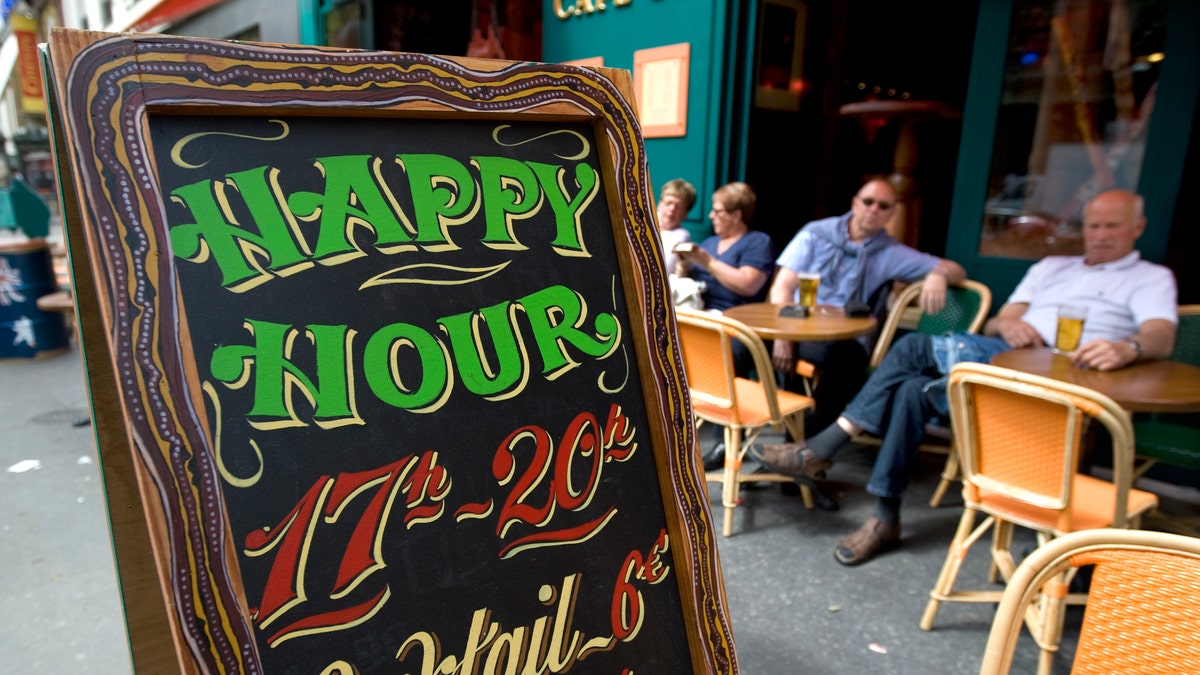
Binge drinking rates in the U.S. are at a much higher rate than previously thought, according to a report released Tuesday from the Centers for Disease Control and Prevention.
The CDC found that more than 38 million Americans binge drink four times a month—consuming an average of eight drinks each time.
And it’s not just young adults. Although it is more common between the ages of 18-34, those 65 and older reportedly binge drink more often—five to six times a month.
The frequency of binge drinking is higher in households with an income of $75,000 or more. But the disturbing data found that the highest number of drinks consumed per occasion is by people living just above or below the poverty line, with eight to nine drinks per occasion.
Binge drinking is defined by the CDC as consuming five or more drinks for men and four or more drinks for women on a single occasion. Dr. Manny Alvarez, senior managing health editor of FoxNews.com, said he thinks it is disturbing that Americans are drinking nearly double the amount of what is already considered too much.
“It is alarming to me that Americans are not being smart in knowing how to respect the effects of alcohol,” Alvarez said, “it’s putting their health in jeopardy.”
According to the CDC, binge drinkers are at a higher risk for many health and social problems, including car accidents, violence, liver disease, certain cancers, heart disease, sexually transmitted diseases and unintended pregnancies.
Overconsumption of alcohol is the third leading preventable cause of death, with more than 80,000 fatalities in the United States each year.
“People don’t realize that in large quantities, alcohol is quite a dangerous substance,” Alvarez said. “Plain and simple, alcohol is addictive and the behavior that comes along with it is addictive.”
Alvarez said he believes that the rising rates of binge drinking could be an effect of Americans’ fast-paced, high-stress lifestyles.
“There are psychological ties that drive people to drink. When people don’t know how to handle their depression or anxiety, they think that alcohol could be the answer in easing their symptoms,” he said.
On top of major health issues, the economic toll of binge drinking is on the rise, costing more than $223.5 billion in 2006.
The states most affected by binge drinking are in the Midwest, New England, the District of Columbia, Alaska and Hawaii, the report said. However, it is the southern part of the mountain states like Arizona, Nevada, New Mexico, and Utah, where drinkers consume a higher number of drinks.
“To make this issue even worse, the alcohol industry has taken aggressive steps to promote their products, and it has become a staple of our society,” Alvarez said.
“Binge drinking causes a wide range of health, social and economic problems and this report confirms the problem is really widespread,” CDC Director Thomas Frieden said in a press release. “We need to work together to implement proven measures to reduce binge drinking at national, state and community levels.”
Alvarez agrees that the report is telling in what needs to be done in regards to drinking in the U.S.
“As a country we need do something about this problem and educate people so they can understand the dangers—and in turn it will save lives,” he said.
